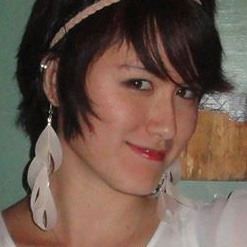
Opening Pathways to Peace
In September of 1999, thirty five volunteers from 15 nations gathered in Belfast as part of the Religious Youth Service (RYS), an interfaith peace initiative. The organizers of the RYS publicly sought to recruit volunteers who were willing to work hard and invest their spirit in helping close the divide that separated different parts of the Belfast community.
The RYS challenge piqued the interest of an outstanding and diverse group of volunteers. Among those joining the diverse team was Michael, a young African-American minister from New Jersey, a Mongolian student, a Japanese Buddhist nun, participants from India, Kenya as well as the Seychilles (an island off the coast of Africa). Those selected worked to put together their finances and blocked off two weeks of time to make the journey.
The Sting of Sectarian Conflict
The land in the North of Ireland has recorded a history that is often as sad as the countryside is beautiful. Contested along sectarian lines in the decades following the formation of the Republic of Ireland the region harbored some of the bloodiest acts of terror and retaliation in the 20th century. “Bloody” Belfast was a descriptive headline  that too often announced that another act of violence had occurred at the cost of life and limb.
that too often announced that another act of violence had occurred at the cost of life and limb.
What results can be hoped for if some people are determined to bring about change while others are equally determined to protect the status quo and both sides have adherents willing to kill to get their way? This was the dilemma that was facing the people of Northern Ireland and it was a recipe for trouble. So much trouble, that the local citizens described this period of prolonged strife as “The time of the troubles.”
Fortunately, in time people become exhausted from exhibitions of hatred and violence and seek more humane solutions to solving problems. Political leaders can help break deadlocks but it is more often ordinary people, those with a heart that yearns for peace and reconciliation that will lead the way.
Belfast, September 1999
Many of us arrived in Belfast with mixed feelings, holding on to a romantic optimism about how dedicated people can contribute to positive change while also worrying about the potential mortal danger that our diverse group could attract. Coming from diverse religious and cultural backgrounds we soon came to agreement that the shortest route to creating a bond of unity was to put into practice a spiritual insight found in every religion, practice selfless service.
We worked and made decisions with an effort to keep the needs of others in the forefront. In doing this, each of us could grow in the awareness that life is too important to be simply just about me. Yet, living an unselfish lifestyle requires much practice and we were at best novices in need of a model to show and inspire us. We fortunately found that inspiration in the Columbanus Community.
The Columbanus Community in Belfast is a unique community staffed in large part by religious people from both the Roman Catholic and Protestant faiths. It is a model of Christian cooperation in a city crying out for healing and reconciliation. A palatable atmosphere of peaceful cooperation flowed through the community that was guided by a warm hearted New Zealand born Anglican clergywomen. The reverend and the community encouraged us to offer our service at the center and we were happy to have that opportunity.
The Columbanus Center serves the Greater Belfast community in many ways but one quiet service it provides is a safe sanctuary for meetings between antagonists. Reconciliation work can be perilous in areas where people are murdered for trying. The center provides a protected cover for meetings of civic and political leaders serving as a safe haven from the spotlight of media and the eyes of spies and snitches.
Reconciliation and peace building require hard and often painstaking effort as relationships can be destroyed with one breach of faith or a misspoken word. At the time of our arrival residents of Belfast had already reached a point where they were deeply searching for alternatives to violence. The Columbanus Community was playing a role in creating an environment for reconciliation and peace.
A Peace Garden that works
Our team of volunteers were happy to work at the center and serve both the institution and the special people that worked there. The hosts requested that we clear a large weedy field and transform it into a place that could be used for prayer, reflection and relaxation. We responded and over the next two weeks our volunteers helped transform the area into a Peace Garden.
Enthusiastically, we took to our work and were greeted by three days of heavy rain. The rain soaked the grounds we were clearing and pools of water and mud formed. Soaking wet, digging soil, cutting trees, creating paths, step by step, we moved together. The rains provided us with a challenge and that challenge served to draw us into a deeper communion. When the sun did arrive we met it with a heart of appreciation and used its warmth as an excuse to linger in small talkative groups. The sounds of our laughter and conversation were like a fresh musical score covering the edgy sounds of the larger Belfast community.
In the twelve days allotted we managed to shape the Peace Garden into something both attractive and practical. Set into the garden was a beautiful Pagoda and a garden pool that was arched by a wooden bridge. The garden was anchored by a historic stone Celtic Cross that had been build years before. The flowers and greenery added to the atmosphere which was one where reflection and relaxation were natural.
During our time working in the garden many people were attracted by the lively activity of our volunteers. On our closing day the Center hosted a special reconciliation ceremony led by local and international members of the Women’s Federation for World Peace. The ceremony added to an already richly spiritual environment. Among the many attending the ceremony was an elderly gentleman, Joseph. What happened to Joseph that day in the garden offers a clear sense of the impact a labor of love can have.
Love and Forgiveness
Joseph was rather short, a slight tilt to him as a result of a good many hard years on the planet. He carried the air of a person who had been more than willing to fight for what he thought was right. As a Roman Catholic in Belfast he had spent his life hating those “bloody English”. I imagine he had many a fight in his youthful glory days but now he was approaching a time in life ripe for clearing one’s heart and finding peace.
Joseph entered the garden at the time of the reconciliation ceremony. He was visibly moved by the joy on people’s faces and with the transformation of the field into a beautiful peace garden. Old Joe asked who was responsible for creating the peace garden and he was told that it was the young volunteers from different nations. He moved around approaching each and every young person and offered his thanks. He would say to them; “Well lassie, what’s your name and where are you from? The volunteer would answer back, “I am Maria from Hungary.” “Oh, thank you Maria, God Bless you and God bless Hungary.” He would then approach a young man and say, “Laddie, what’s your name and where are you from?” The next person would say, “I am Julio from Spain” and Old Joe would bless him and then bless his nation.
The happiness of Joseph and the happiness of all those in the garden seemed to be coming to a climax as Old Joe came closer and closer to William, who happened to be by accident of birth, very English. People in the garden were increasingly becoming aware of the potential disaster of seeing old antagonisms flare up on what was supposed to be a day of reconciliation.
Can God Bless the English?
Old Joe approached William and said; “Well laddie, tell me, what’s your name and where are you from?” “Well sir, I am William and I’m from England.” A silence followed where a quick response would have been expected. Joseph looked at William closely, then he gave him the up and down. He paused when his eyes had come into grips with Williams’. After the eye-to-eye fix, we wondered what was going to happen. “Well William, God bless you and God Bless England!”
At that magical moment, the garden quiet ceased, human motion began and laughter awkwardly jumped out as a way to ease the hearts and minds of those who were uneasy. We had witnessed a miracle, not the walk on water type of miracle, but the move the unmovable type of miracle. Joseph could see William as the good young man he was. Here was an Englishman that was good and he was worthy of being blessed. If he was worthy of being blessed then his country also must be worthy of that blessing. So William’s heart and effort to build a garden allowed one man to liberate his heart from the pain of resentment.
Resolving resentment
Real hurt and misunderstanding exists in our personal life and in the lives of so many people. When resentment is not resolved it has the potential to generate an anger that can lead to violence. Redirecting the resentment of those that have suffered is a critical challenge facing those that want to build peace. Preventing resentment from rising up into anger and hatred was achieved in the Peace Garden through loving service to the community.
Sincerity and hard work can often go a long way to facilitate the process of healing. Talk is cheap if it is not backed by action. In building the peace garden we were actively contributing to the peace process one heart at a time.
Three weeks after we left our work at the peace garden, the President of Ireland Mary Patricia McAleese paid the Columbanus Center a visit and walked the garden paths. The President was moved to come to Belfast to help the peace process as high level international talks were underway. By her participation, she made a recognizable contribution to the process that was about to set a lasting peace in place.
One may wonder why the President was drawn to the very spot where our team of global peacemakers had labored with a refreshing zeal. Do these things simply happen by chance or are they guided by invisible forces? It is hard to say what power is generated when committed people decide to offer their hearts, their labor and even risk their lives for a just cause. I can offer no analytic proof of positive changes that came from our efforts. It is a fact that after decades of unsuccessful negotiations a successful peace initiative was put in place soon after our international volunteers made their offering.
Was it simply an interesting twist of fate or were our efforts a contributing factor serving to tip the scale in favor of peace? What do you think?
Credit: This post was submitted by John Gehring who is a former Director of RYS and continues to serve as an advisor. RYS was launched in November 1985 at the Assembly of World Religions Conference. Its first project was Summer of 1986, and since then 250 + projects have been hosted in over 50 nations, involving participants from over 100 nations.
RYS has several projects coming up including one in Malaysia and in Honduras in early January 2014.













